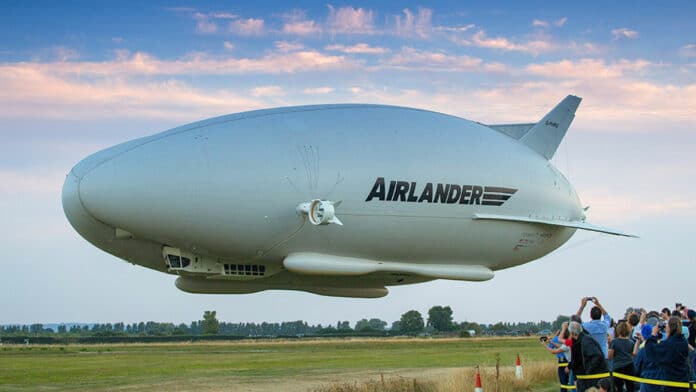BAE Systems and UK-based Hybrid Air Vehicles have signed a Memorandum of Understanding (MoU) to explore the potential of Airlander, an ultra-low emissions large aircraft, in defense and security applications.
BAE Systems’ FalconWorks advanced research & technology center for the Air sector will lead the project, which will also examine technical and program collaboration opportunities. The MoU also covers the exploration of potential defense market opportunities for HAV platforms, as well as related supporting activity.
The company says its Airlander platforms provide an alternative sustainable and cost-effective solution to air logistics and Intelligence Surveillance and Reconnaissance (ISR) capabilities and the deployment and recovery of UAS (unmanned aerial systems).
Airlander 10 is an innovative aircraft that could revolutionize modern defense. With its highly efficient design and ultra-low emissions, Airlander 10 offers a new opportunity to rethink the skies and explore new possibilities.
Equipped with state-of-the-art computing, communications, surveillance, and reconnaissance capabilities, this funny-looking airship has the potential to remain airborne for up to five days. The company claims Airlander emits up to 90% less carbon, and that is creating demand despite the problematic past of airships.
Its unique ability to operate from any reasonably flat surface, including water, with minimal infrastructure provides a level of mobility, deployability, and flexibility that is unmatched by current platforms. This hybrid capability makes it an excellent choice for maritime, coastal, and land-based expeditionary warfare in areas where other platforms are unable to operate effectively.
The military-configured Airlander would be able to carry up to a 10-tonne logistics payload and provide longer-range, lower-cost, and higher-capacity air transport than today’s military transport helicopters. It could transport a huge payload over 2,000 nautical miles (3,700 km).
The future Airlander 50 and Airlander 200 platforms will offer low-cost, sustainable, tactical, and strategic airlift capability.
“At Hybrid Air Vehicles, we are revolutionizing aviation, and Airlander is designed from first principles to rethink the skies. Airlander can be thought of as the world’s most efficient large aircraft. This has provided new opportunities for the civil regional transport market and also represents a new path forward to deliver net-zero air power capabilities,” Tom Grundy, CEO of Hybrid Air Vehicles, said in the press release.
“This announcement demonstrates the significant momentum that we have built behind the Airlander project, and we are looking forward to carrying that with us into the next crucial stage of starting production of Airlander 10.”
